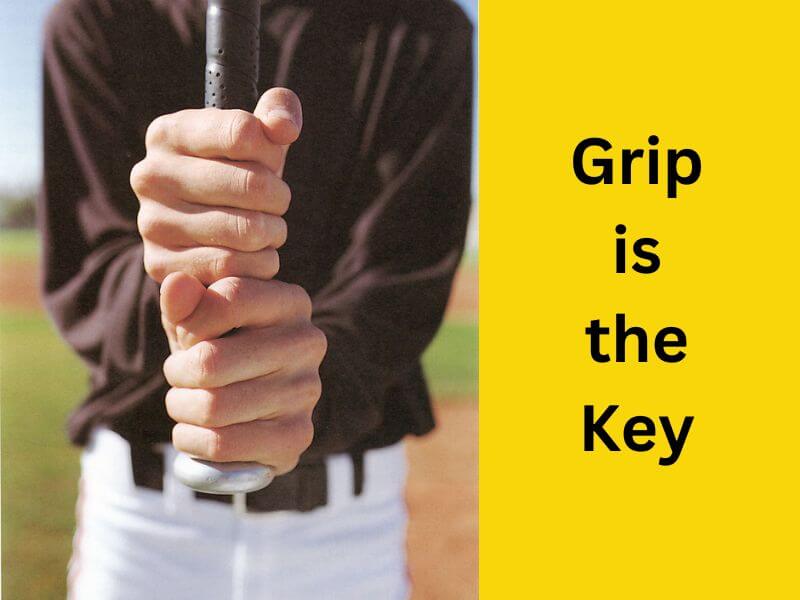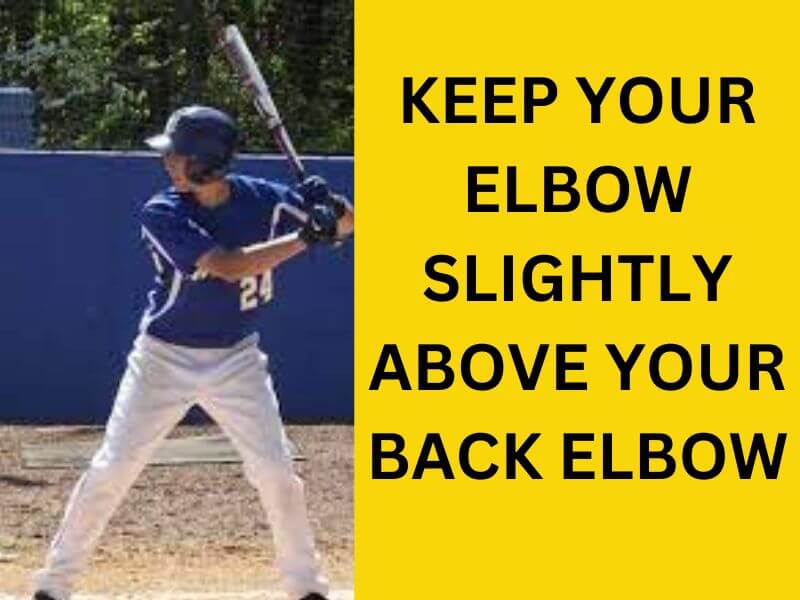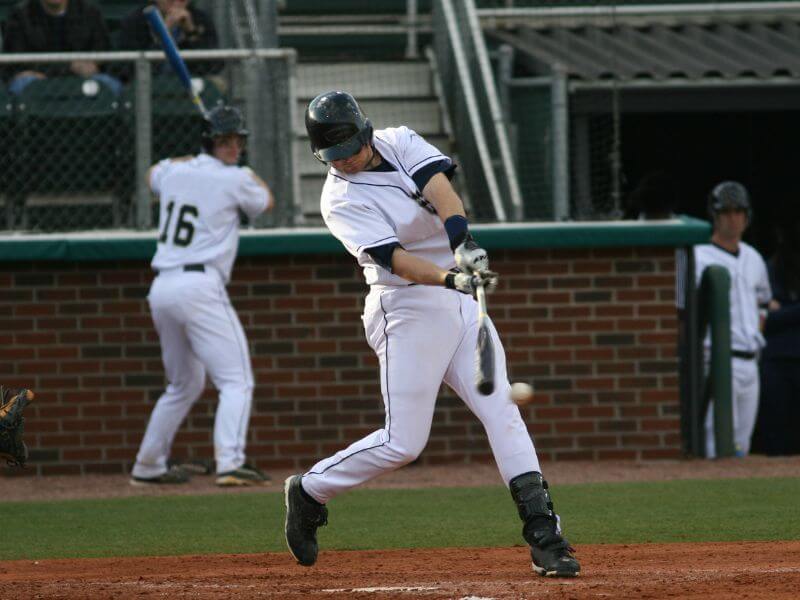Have you ever watched a baseball game and wondered how those professional players hit the ball so sweetly? It seems that they have some kind of superpower to hit the ball so hard. The sound of sweet timing is better than your favorite song, right?
As a coach, it’s my daily routine to help my students learn how to hit a baseball. In this article, I will explain how you can do that with minimum effort.
As a matter of fact, hitting a baseball is not that hard. In fact, with the right technique and practice, anyone can become a pro at knocking the ball out of the park.
So, grab your bat and be ready to take your batting to the next level.
How to Hit a Baseball?
Here is a step-by-step process of How to Hit a Baseball. And don’t forget that practice is the key to success. Therefore, I have added a practice plan so you can become a better hitter with a proper practice plan.
Properly Grip the Bat

The first thing you should know is how to hold a bat. The Grip is a fundamental aspect of hitting the baseball, and it can greatly impact the power and control you have over the bat.
Many young players often overlook this crucial aspect of their swing, but experienced hitters understand just how important this is.
One common mistake that many beginners make is gripping the bat too tightly. While it seems intuitive to hold on tight, a firm but relaxed grip offers more flexibility in your wrists.
It helps you to generate greater bat speed and make solid contact with the ball. Additionally, gripping too tightly can restrict the blood flow to your hands and cause unnecessary tension in your swing.
Now, let’s talk about how you should place your hand to grip the bat properly. If you are a right-handed batter, you should grab the lower handle of the bat with your left-hand fingers and place your right-hand fingers above it. If you are a lefty batter, just do the opposite.
Another key element of a proper grip is aligning the knuckle of your top hand (for right-handed hitters, this would be the left hand) with those on your bottom hand while holding onto the handle of the bat. This technique helps maintain stability throughout your swing by prompting a straight wrist alignment.
It also allows for better control over where you place the barrel of the bat during each pitch. A good grip tape can help you to grip the bat properly.
Stance on the Batter Box
The right stance inside the batter’s box is essential when you are trying to hit a baseball. Stance sets the foundation to swing your bat and can greatly impact your ability to make proper contact with the ball. You must be in a balanced position to hit the ball harder.
So, how do you get started? The first thing is you should stand parallel to the pallet. Keep your feet shoulder-width apart, with slightly more weight on the balls of your feet rather than on your heels.
By staying balanced, you will be able to react quickly to the pitch and transfer your balance while hitting it.
Another important factor in finding the right stance is determining what feels comfortable and natural to an individual player. Though there are some general guidelines, the body mechanics are not the same for all players. Therefore, you should experiment with different stance types.
For example, some players prefer more closed or open stance depending on their swing mechanics. Personal preference also plays a role here.
Height and length also play a crucial role instance. But one thing is certain for all players.
Players should be comfortable to stretch their bat and place the bat in the middle of the batter box when they are ready to hit the ball.
Finding balance and comfort within your stance will help maximize power and control in your swing will, allowing you to make a quick adjustment to different pitch types.
Elbow Position

The correct elbow position can significantly impact your swing and determine the power and accuracy of your hit.
Many beginners make the mistake of leaving their elbow too low or too high, which can lead to inefficient swings and missed opportunities.
So, how do you achieve optimal performance with your elbow position?
To achieve optimal performance, keep your elbow slightly above your back elbow during the swing. This position helps to get a smooth rotation of the upper body, generating maximum power from your core muscles.
Also, don’t forget about the role of flexibility in maintaining proper elbow position. If you pay proper attention to the crucial aspect of elbow position, you enhance not only your chances of making solid contact but also increase overall power in your swing.
Wait for the Ball
As a batter, we often get caught up in the excitement and adrenaline of the game. We want to smash the ball out of the park as soon as it leaves the pitcher’s hand. However, this can actually work against us.
By waiting for the ball to come to us, instead of lunging forward or swinging prematurely, we give ourselves more time to assess the trajectory and speed of the pitch.
Another vital factor in hitting properly is having keen observation skills. While waiting for the ball, it’s essential to study not only the pitcher’s wind-up but also their arm angle, release point, and tendencies they may have when throwing different pitches.
You can also predict the pitch type while you see the grip of the pitchers. Though most pitchers don’t show their grip quite easily, as a batter, you should always try to see the grip to predict the pitch type.
If you closely observe the pitch and wait for it, you will be able to calculate where the pitch will likely cross the home plate – providing us ample time to swing the bat and time the ball properly.
Proper Swing

The proper swing is the foundation for hitting a baseball consistently and effectively. It all begins with a balanced stance, feet shoulder-width apart, knees slightly flexed, and weight evenly distributed.
As the pitcher winds up, maintain focus on their release point while keeping your hands back near your rear shoulder.
When the pitch is released, initiate your swing by rotating your hips towards the pitcher while keeping your head still and eyes locked on the ball. Avoid lunging or reaching for the ball; instead, let it come to you within your strike zone. As you make contact with the ball, extend your arms fully and snap your wrists to generate maximum bat speed.
Remember that practice makes perfect when it comes to mastering the proper swing in baseball. Building strength and muscle memory through repetitions will improve mechanics and overall performance at bat.
Additionally, studying pitchers’ tendencies can help anticipate pitches and adjust accordingly during each at-bat.
Proper Timing
If you want to hit a home run, nothing is more important than finding the sweet spot on your bat and timing your swing correctly. Swinging with full force isn’t the only factor; timing and accuracy are just as important. Accurately timing your swing is the most important factor in making solid contact with a baseball.
A batter’s timing is their ability to coordinate his or her body’s motions with the pace, position, and kind of pitch. Keeping your gaze fixed on the ball from the moment you let go until you make contact is a vital part of timing.
Then, you can change your swing based on where the ball is going.
Develop a steady load posture that permits a fluid transition into your swing’s first motion to enhance your timing.
Simulations of in-game events in practice can also make a big difference. You’ll need to be flexible with your timing because of the wide range of pitching speeds and techniques.
Transfer Your Weight
As you move forward, your weight should move from your back leg to your front leg. This weight shift gives you the power you need to hit the ball while keeping your balance and control.
Make sure your feet are shoulder-width apart and spread your weight properly between them. This will help you move your weight. When the pitcher throws the ball, turn your hips and put your weight on your back foot.
Timing is a key part of moving your weight successfully. As you get ready for the swing, you want to put most of your weight on your back foot. When you let go of the swing, this gives you speed and momentum that will move you forward.
When you hit the ball, use both legs to put all of your stored energy into pushing through the ball to get the most power.
Many of the best baseball players talk about how important weight shift is to hitting well. Without it, even the fastest and biggest players might have trouble getting a good grip on the ball.
So, if you want to get better at hitting, you should put learning how to shift your weight at the top of your list.
Here is a video demonstration that will help you
Mental Strength
Mental toughness is equally as vital as physical strength and technique when hitting. Concentration, self-assurance, and composure under pressure can determine success or failure.
The finest hitters know that mental fortitude is the single most important factor in their success.
Maintaining full attention and being in the moment throughout each at-bat is crucial for building mental toughness when hitting a baseball. To do so, one must tune out background noise or regrets about past attempts and concentrate solely on the presentation at hand.
Strengthening one’s mind through visualization is another viable option. Conditioning your mind to believe in your talents and raising your odds of executing those images in real life can be accomplished by imagining successful hits before going into the batter’s box.
Having the mental fortitude to bounce back after a defeat is also crucial in hitting. Even the best hitters in baseball strike out more often than they homer. Your mental toughness as a batter can be gauged by how you deal with defeat.
Use your strikeouts as learning experiences rather than something to dwell on or let impair your judgment. The ability to keep playing well for a whole game or season depends on your attitude toward each new opportunity.
Practice Plan on Hitting the Baseball Bat Properly
Learn to stand and hold the bat correctly first. Put your feet about shoulder-width apart and spread your weight out. Keep your hands loose but in control as you take a strong stance with the bat.
Prepare for entering the pitch by practicing balance and concentration.
The next step is to improve your swing technique. This calls for a smooth transition of weight from the heel to the ball-contact foot, a rotation of the hips and shoulders, and a complete extension of the arms. Start off moving gently to perfect your form, and then work up to full speed as you gain confidence.
Practices should include drills that replicate actual game conditions. Improve your timing and reflexes for different pitches as you train like you would in a real game.
You can practice for the many types of pitches you might see in games by using a pitching machine or by having a coach throw balls from different angles.
Consistency should be a primary goal of your training sessions. Muscle memory is the key to hitting. Thus, consistent practice is necessary for improvement.
Dedicate some time each day or week to striking drills to help you gain self-assurance.
If possible, try to video your practice session and find out any mistakes that you are making in the practice session. You can also consult a coach to learn more about how to hit a baseball.
Repeat it daily. Practice means perfection, So never stop practicing.
FAQs
How do I improve my bat speed?
To improve bat speed, work on strengthening your core and practice drills that focus on quickening your swing.
What’s the ideal stance for hitting a baseball?
Your feet should be shoulder-width apart, knees slightly bent, and your weight evenly distributed. Your front shoulder should face the pitcher.
Is it better to use a wood or aluminum bat for practice?
Many players practice with wood bats because they’re less forgiving, making you focus on technique. Aluminum bats can be used for batting practice, too.
How do I handle different pitch types (fastballs, curveballs, etc.)?
Practice recognizing different pitches and their trajectories. Adjust your timing and swing accordingly. You can use a bowling machine to practice these balls alone.
What’s the best way to stay patient at the plate?
Focus on pitch recognition and discipline. Don’t swing at pitches outside the strike zone.
How can I overcome the fear of getting hit by a pitch?
Trust your protective gear and practice drills that simulate inside pitches to build confidence.
How can I deal with a batting slump?
Slumps happen to everyone. Work on your fundamentals, stay positive, and don’t overthink it.
What’s the best way to practice hitting when I don’t have access to a field?
You can practice your swing in a batting cage, use a tee, or even practice your hand-eye coordination with a soft toss against a wall.
Final Words
There it is. Now you know how to hit a baseball with perfection. But remember, hitting a baseball is not an easy task if you are against a good pitcher. Therefore, try to hit as many as possible in your practice session. And who does not know – Practice makes a man perfect?
Read More
How To Increase Pitching Velocity By 10 MPH
15 Minutes Daily To Learn How To Slide Head First In Baseball
How to Start Practicing Pitching Alone
How To Stop Arm Barring Baseball

Hello everyone. My name is Jason Butler, and I live in California, America. I was a professional AAA Minor League Baseball player. I lost my chance of playing MLB for injury issues, but I did not lose my love for baseball. I attended the coaching training program and am now working as a coach in a small school in San Diego.
I always love to share my experience and knowledge if that can help you. Play baseball, and stay fit.
